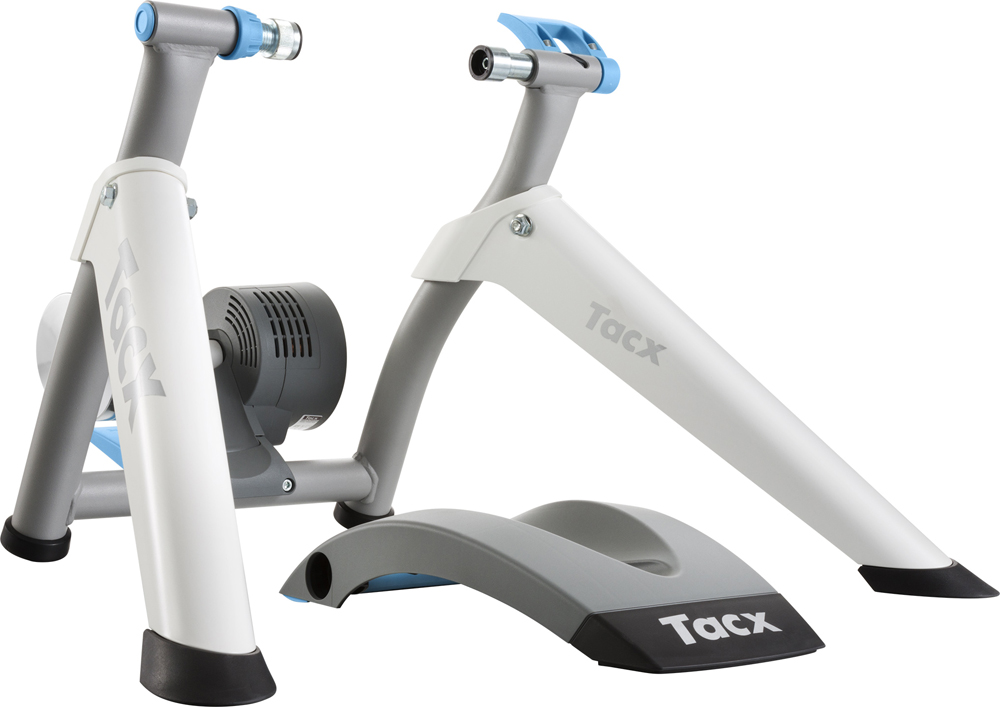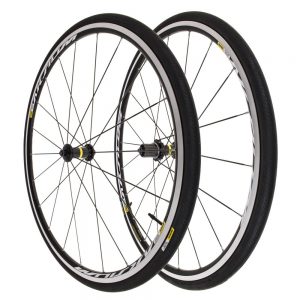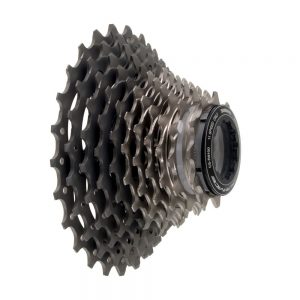If you’re like most of us, and not lucky enough to live in San Diego, sometimes you have to deal with bad weather. Cold, snow, darkness, rain, and wind can all put a real damper on your training. Which means that when spring rolls around, you’ll be back to square one and maybe carrying a few extra pounds of holiday weight as well. That’s where indoor training comes in. Rather than taking two steps forward every summer and one step back every winter, indoor training allows you to stay fit all year long!
Why indoor training?

Of course, there are a lot of ways to stay in shape over the winter. You can take spin classes at your local gym, run on a treadmill, heck, you can even do burpees in your living room. But nothing trains you better for cycling than…well, cycling. And even compared to spin classes, indoor training has some serious advantages:
Convenience
If the weather’s too nasty to ride, it might be nasty enough that you don’t even want to leave the house. That’s ok, you don’t have to! Keep your trainer in the closet (or the middle of the living room floor, if you’re lazy) and just hop on whenever you feel like it. You’re not beholden to your gym’s class schedule, you don’t have to worry about parking or crowds or whether bikes will be available, and you don’t have to brave the roads and the weather if you don’t want to.
It’s your bike
What’s the first (and worst) part of every spin class? Adjusting the bike. Sure, there are a million different dials and adjustments to get the fit just right, but those can be a real pain to tweak every time. When you ride on a trainer at home, you’re riding your actual bike. You know the geometry is right, you know the ride height is right, you know your shoes will work with the pedals, and you know the saddle is broken in just the way you like it. Everything feels familiar, and that means you can focus on the workout.
You can do other stuff
Put the trainer in front of the TV and watch a movie! You’ll be surprised how easy it is to lose yourself in a movie or TV show, and suddenly you’ve gone 50 miles. Plus, since you don’t have to worry about watching where you’re going or traffic, you can read a book, listen to podcasts, or whatever you feel like. If you’re not just looking for an endurance ride and want to get a serious workout in, there are a million different videos online to ride along with. Some of them even use onboard cameras so it looks like you’re riding through the Swiss Alps or the wide open roads of the American Southwest, all without leaving the house. And if you want to take your training to the max, software like Zwift and Sufferfest, paired with a smart trainer, will get you the closest thing to a real riding experience you can get without an actual road. But we’ll get to those later.
What you’ll need
Trainer
Obviously, the main thing you’ll need (we’re assuming you already have a bike) is a trainer. There are so many options here that it can be hard to decide, but they fall into two major groups: smart trainers and basic (“dumb”) trainers.
Smart trainers
Smart trainers hook up to a phone or laptop and are perfect for the data junkie in you. In addition to speed, distance, and power, they can incorporate heart rate monitors, cadence monitors, interval timers, and anything else you might want to track. They output data via Bluetooth or ANT+, and can be incorporated with software like Zwift to give you the complete riding experience. Create virtual intervals and the trainer will simulated the extra power necessary to blast through the tough parts. Ride virtual hills and the trainer will crank up the resistance, while you watch your virtual self ride up hills on your laptop or TV. Set specific power or heart rate thresholds and watch your data in real time. Replicate your favorite local hill climb, or ride a road like Mt. Lemmon or Stelvio Pass that you can’t get to in real life. The possibilities are endless!
Basic trainers
Basic trainers are much simpler, and don’t have the range of features that a smart trainer does, but usually come at a pretty steep discount. They offer a range of resistances, usually adjusted manually by a switch you attach to your handlebars, and some of the higher-end ones will output your speed and power to apps like Strava so you can track your virtual ride. They’re more affordable, less complicated, and great for the rider who just wants a quick and easy way to get their heart rate up every once in a while but doesn’t care about tracking every detail.
Rollers
Rollers are as simple as training options come. They’re just a set of three rolling cylinders that you put your bike on top of and simply ride. No data, no screens, no Bluetooth, just you and your bike. There’s a bit of a learning curve, since you’re actually balancing on the bike rather than clamped into a trainer, and you probably won’t be able to catch up on your book while you ride, but for an authentic feel, a trainer is your best shot.
Accessories
Trainer tire
If you’re riding a “wheel-on” trainer, you’ll probably want a trainer tire. It’s not vitally important, but the flywheel on your trainer will wear your road tire faster and more unevenly than the road, so you’ll go through tires faster. Trainer tires are a harder rubber compound, so they can take the abuse of a trainer better than your average road tire.
Spare wheel
If you’re getting a trainer tire, you’ll probably want a wheel to put it on. If you don’t think you’ll be switching back and forth much, you can get away with swapping your trainer tire out in the winter and leaving it on until spring, but if you want to use your trainer at night in the summer or you anticipate some nice days in the winter, you’re going to get real sick of mounting and un-mounting a tire every time you take to the road. An affordable spare wheel saves a lot of time and hassle.
Spare cassette
If you’re getting a “direct-drive” trainer, which clamps directly to your rear dropouts instead of your tire, you’ll need a cassette to put on it. Grab a duplicate of your daily rider or step up the range to make the trainer a little harder, but make sure you get the right number of rings for your derailleur (11 speed, 10 speed, whatever your rear wheel currently has)
Tablet mount
If you want to watch Netflix, set up Zwift, or track your data on the app that came with your smart trainer, you’ll need a screen. You can just put your laptop on a nearby coffee table if you want, but if you’re not set up for that, a tablet mount is an easy and affordable way to bring that screen within arm’s reach.
Sweat cover
One thing you’ll notice when you start training inside — or might have already noticed, if you go to spin classes — is that you’re going to sweat. A lot. Without the wind on your face and the pads in your helmet to keep you dry, you’ll be dripping in no time, and you’ll want to keep those drips off your bike, your carpet, and your floor. Might want to grab a headband too.
Stay tuned for a followup post about getting started with a smart trainer and training software, and happy training!










